SUMMARY
This is AI generated summarization, which may have errors. For context, always refer to the full article.
![[Vantage Point] Xi’s flotilla blocks energy development in South China Sea](https://www.rappler.com/tachyon/2024/04/china-aggression.jpg)
On May 15, a convoy of about 100 civilian fishing boats will sail to Scarborough Shoal from Zambales to install buoys, a symbolic assertion that the shoal is ours.
Two mother boats will be in the frontline, with the civilian mission aiming to invite foreign observers while delivering essential supplies for the fishermen operating within the western part of the country’s exclusive economic zone (EEZ).
“The primary objectives of the mission are to conduct a ‘peace and solidarity regatta’ within our EEZ, during which symbolic markers/buoys emblazoned with the rallying cry ‘WPS, Atin Ito!’ (WPS is ours!) will be placed to reinforce our country’s territorial integrity,” according to Atin Ito coalition co-convenor Rafaela David in a statement on April 26.
China invaded Scarborough Shoal’s lagoon in 2012 after the China Coast Guard’s (CCG) standoff with Philippine vessels. Two CCG ships have since been permanently stationed inside the lagoon, while smaller boats of Chinese fishermen come and go to fish in the lagoon.
A deltoid chain of reefs about 125 nautical miles (232 kilometers) from Luzon, the shoal has been a regular source of livelihood for Filipino fisherfolk and even a much-need shelter during typhoons.
Today, they find themselves consistently bullied and shooed away from the area by Chinese militia under the protection of the powerful China Coast Guard. What used to be Scarborough Shoal’s protective lagoon for our fishermen has become a flashpoint in a potential conflict between Washington and Beijing.
Supporters of China in our own legislature claim that we should not be alarmed because all is quiet in the shoal’s front. They continue to gloss over the fact that this is only so because China now has full dominion over it. The world’s second largest economy has belligerently scoffed at and ignored the unanimous award issued on July 12, 2016, by the Arbitral Tribunal in favor of the Philippines in the South China Sea Arbitration case (The Republic of the Philippines v. The People’s Republic of China) filed in 2013 challenging Beijing’s historical claims to most of the South China Sea.
Protecting EEZ against Chinese incursion
The Trilateral Meeting at the White House earlier this month among United States President Joe Biden, Japan’s Prime Minister Kishida Fumio, and President Ferdinand Marcos Jr. was the natural reaction to the threat posed by the People’s Republic of China.
China has been relentless in pursuing its claims in the South China Sea, running roughshod over the Philippines and other countries in Southeast Asia, and on the Senkaku Islands (Diaoyu to China), which falls under Japan’s administrative control. Its Coast Guard encroaches daily in the disputed areas, and with total impunity, given its naval and military prowess.
The Philippines has been especially vulnerable due to decades of neglect caused by the corruption and incompetence of its leaders which has made the country the weakest militarily and economically in the region.
China claims almost all of the South China Sea, including the areas well within the Philippine EEZ, an area of sea measuring over 2.26 million square kilometers that extends 200 nautical miles from the baselines of the Philippine archipelago, under the United Nations Convention on the Law of the Sea (UNCLOS).
The EEZ is bordered by the Philippine Sea to the north and east, the South China Sea to the west, and the Celebes Sea to the south. This may mean an overlap with its neighbors like Malaysia and Indonesia, in which case the countries involved will have to settle the dispute among themselves, hopefully through peaceful means.
The Philippines should not even be in a maritime entitlement dispute with China because Ayungin Shoal, where the BRP Sierra Madre was intentionally run aground by the Philippine Navy to boost its claim on the Spratly Islands, is only 105 kilometers from Palawan. In contrast, the shoal is 1,285 kilometers away from the nearest Chinese landmass.
Photographs of the Chinese Coast Guard using high pressure water cannons to blast boats hired by the Philippine Navy to resupply its troops stationed on the decrepit Sierra Madre vessel in Ayungin Shoal recently made the front pages of newspapers all over the world. This act of aggression by China is a clear and bold rejection, not only of the UNCLOS, but that of the ruling of the Permanent Court of Arbitration at The Hague which decided in favor of the Philippines after the latter filed a case questioning the legality of the nine-dash line China uses to justify its occupation of the shoals and islets within the Philippines’ EEZ.
What is happening in Ayungin Shoal is what Athenian historian and general Thucydides described in his History of the Peloponnesian War as, “The strong do what they can and the weak suffer what they must.”
Fortunately, the Philippines has become more courageous, since former president Rodrigo Duterte, called the “Chinese satrap” by some people, stepped down from office. In February 2023, four new Enhanced Defense Cooperation Agreement (EDCA) sites – Naval Base Camilo Osias in Santa Ana, Cagayan; Camp Melchor Dela Cruz in Gamu, Isabela; Balabac Island in Palawan; and Lal-lo Airport in Cagayan – were added to the five existing EDCA sites to strengthen the interoperability of the US and Philippine Armed Forces. This will also allow for a more seamless response to various shared challenges in the Indo-Pacific region, including natural and humanitarian disasters.
It is no hyperbole to say that the Philippines is now bristling with armaments of war.
All nine EDCA sites could become launching pads for missiles, aircraft, vessels, and troops to counter China if it makes good its threats. Note, however, that the sites in Cagayan face Taiwan, which Premier Xi Jinping has vowed to make an integral part of China, by force if necessary. Those in Palawan, on the other hand, are just a little more than a hundred kilometers to the Spratlys, where the Chinese built artificial islands which they had fortified with radar and missiles.
By itself the Philippines is a weak nation, in terms of military and economic strength. It is imperative for the country to join forces with those with more powerful nations.
Troubled EZZ waters a bane for energy development
It is against this backdrop that the trilateral meeting of Biden, Kishida, and Marcos should be viewed. The issue of sovereignty goes beyond mere assertion of national pride. In the Philippine situation, it involves no less than ensuring its economic well-being and its very existence as a nation. Securing the Philippines’ EEZ, however, is not only for the country’s around 2.3 million local fisherfolk. It is also about attaining energy independence.
The two offshore petroleum fields in the country – Galoc in Palawan and Alegria in Cebu – produce 33,258 barrels a day, not nearly enough for its consumption of 429,000 barrels, It imports the deficit of 395,742.barrels from the United Arab Emirate, Kuwait, Russia, and Saudi Arabia.
On the other hand, the Malampaya Gas Field in Palawan yields 12.1 million cubic meters of gas and 5,000 barrels of condensate a day. The bad news is that its reserves will be depleted in less than five years from now.
It is crucial for the Philippines to resume its exploration within its EEZ, which holds, according to the US Energy Administration, immense reserves of oil and gas.
In 2021, Vietnam discovered 150 billion cubic meters of natural gas lying under the sea 80 kilometers from its central coast. It is supposed to start production this year, but an armada of Chinese coast guard cutters and fishing boats now prevent access to the area.
If it comes across a similar deposit, the Philippines will have the same problem. That is, if it can conduct any exploration at all, with the Chinese Coast Guard cutters swarming all over the Philippines’ EEZ.
Asserting our rights
The nine-dash line (it is now the 10-dash line) policy, the basis for the claim of the People’s Republic of China of over 90% of the South China Sea, was first promulgated by the Kuomintang Party of Generalissimo Chiang Kai-shek in 1947.
In 1991, the Philippine Senate rejected the proposal to renew the RP-US Military Bases Agreement, claiming that the bases infringed on Philippine sovereignty. It was time, the senators announced, that the country should chart an independent foreign policy. Henceforth, it would be friend to all and an enemy to no one.
The senators, elected following the People Power Revolution, arrived at the same decision from totally opposing perspectives. The anti-Marcos senators, headed by Jovito Salonga and Aquilino Pimentel Jr., voted against the extension of the military bases agreement because they were resentful of the US for propping up the Marcos Sr. regime for so long. Then-senator Juan Ponce Enrile hated the US for foiling his attempts to depose then-president Cory Aquino. As for the other senator, Joseph Estrada, he was simply an unabashed Marcos loyalist.
It was reported at the time that people danced in the streets when Philippine radio announced the rejection. Nobody is celebrating today that the Chinese has filled the vacuum left by the Americans, except for the likes of Sara Duterte, Martin Andanar, and Robin Padilla.
President Marcos Jr. is trying to undo the harm brought about by the failed experiment in statecraft. He is trying to attract the Americans back. Fortunately, the US government finds it in its interest to respond positively to the overture.
On several occasions, President Joe Biden has been quoted as saying, “Any attack on Philippine aircraft, vessels, or armed forces in the South China Sea would invoke our Mutual Defense Treaty.”
That statement says exactly what it means. According to Ketian Zhang, author of China’s Gambit: the Calculus of Coercion, the US might help the Philippines build a more capable coast guard force, but it is unlikely to involve itself militarily, “short of an actual attack on Philippine assets in the South China Sea.”
In other words, the country must take the initiative, as Ukraine does and as Taiwan presumably will, to resist aggression and protect its interests. – Rappler.com
Val A. Villanueva is a veteran business journalist. He was a former business editor of the Philippine Star and the Gokongwei-owned Manila Times. For comments, suggestions email him at mvala.v@gmail.com.
1 comment
How does this make you feel?
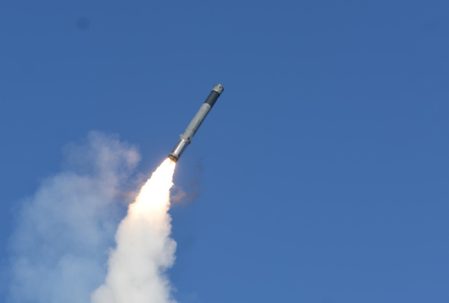

![[EDITORIAL] Paano nangyari na naging mayor ang isa umanong Chinese asset?](https://www.rappler.com/tachyon/2024/05/animated-bamban-mayor-illegal-carousel-revised.jpg?resize=257%2C257&crop_strategy=attention)


![[ANALYSIS] Cognitive warfare: The tip of China’s gray zone spear](https://www.rappler.com/tachyon/2024/05/cognitive-warfare-china-may-18-2024.jpg?resize=257%2C257&crop=472px%2C0px%2C1080px%2C1080px)
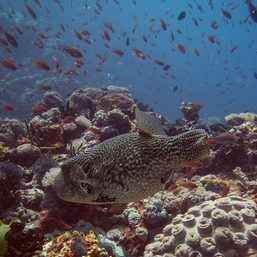
![[ANALYSIS] Caught between the devil and the deep blue sea: The present power situation](https://www.rappler.com/tachyon/2024/05/TL-Caught-between-devil-deep-blue-sea-May-6-2024.jpg?resize=257%2C257&crop_strategy=attention)
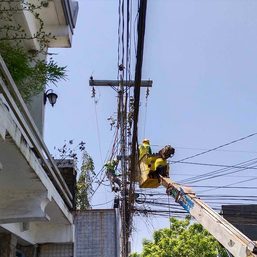

![[EDITORIAL] Ang ‘enemy from within’ sa West Philippine Sea](https://www.rappler.com/tachyon/2024/05/animated-disunited-front-carousel-2.jpg?resize=257%2C257&crop_strategy=attention)
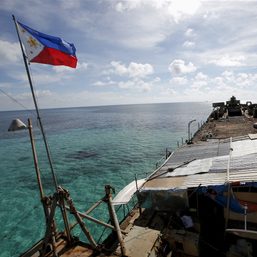

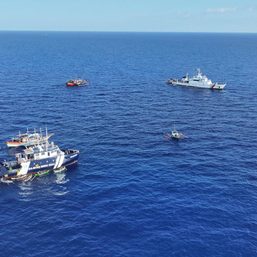
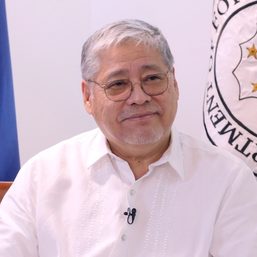
![[OPINION] John Lennon, the West Philippine Sea, and Atin Ito](https://www.rappler.com/tachyon/2024/05/john-lennon-imagine-wps.jpg?resize=257%2C257&crop=284px%2C0px%2C720px%2C720px)


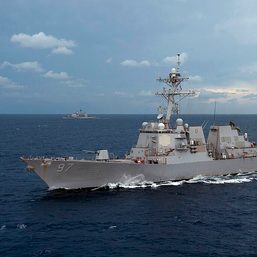



![[Rappler’s Best] No hell below us](https://www.rappler.com/tachyon/2024/05/No-hell-below-us.jpg?resize=257%2C257&crop=293px%2C0px%2C720px%2C720px)

I agree: “The Philippines has been especially vulnerable due to decades of neglect caused by the corruption and incompetence of its leaders, which has made the country the weakest militarily and economically in the region.” This is so sad for our country.